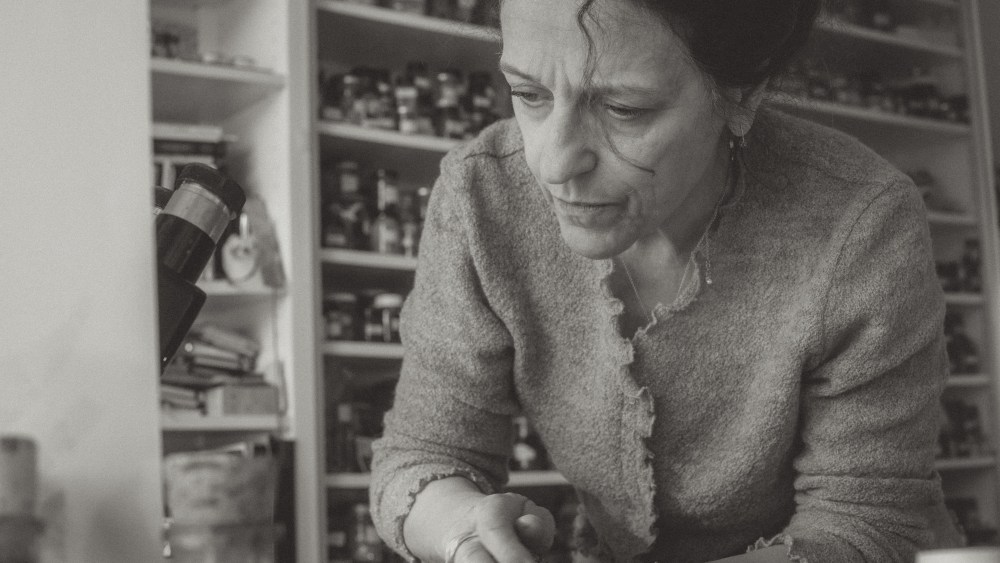Billboard Women in Music 2025
If enamel continues to adorn watch dials today, it’s all thanks to women.
“They are the ones who saved enameling,” said Anita Porchet, arguably the best-known and most respected enamelist today.
While the height of artistic sophistication in the 19th and early 20th centuries, it was a dying art, particularly in watchmakin,g where only a handful of aging craftswomen were still practicing.
“And these women continued to do it, although there was no work [left], out of passion, because they loved doing it,” she continued.
But if someone has given this millennia-old craft contemporary currency, it’s Porchet. Her work graces horological creations from the likes of Patek Philippe, Chanel, Hermès, Piaget, Chaumet and Vacheron Constantin.
What sets the master enamelist head and shoulders above others in the field is the wide range of techniques she has mastered: champlevé, plique-à-jour, paillonné, cloisonné, grisaille, miniature painting and more.

Her contribution to this artistic practice is such that she has received Prix Gaïa in the Artisan-Creation category from the International Watchmaking Museum in 2015; shared the Special Jury Prize at the 2017 GPHG with fellow renowned enamelist Suzanne Rohr, and was a recipient of both the “Hommage au Talent” from the Fondation de la Haute Horlogerie and Prix Culturel du Patrimoine Immatériel Vaudois.
All this is thanks to a dedication to this art that began in her early teens — and to the many women and a few men along the way.
“I couldn’t tell you why, but I’ve always done enameling,” the native of the watchmaking epicenter of La-Chaux-de-Fond told WWD.
As 12, she learned the foundation of her art from her godfather Pierre Schneeberger, an engraver and gem-setter in watchmaking who found himself momentarily out of work due to the quartz crisis of the 1970s. A painter and musician at heart, he had started enameling himself as it had piqued his interest. This triggered a passion in Porchet that never dimmed.
While a student at Lausanne’s École des Beaux-Arts in the early 1980s, she was given leave time to study with a veteran enameler, a woman who had taught the very last class on the matter at Geneva’s school of decorative arts, which had shuttered in 1970.
Early on, she joined a group of enamelists in the city, mainly to share bulk purchases of enamels. “There were only women,” Porchet noted. By then, it couldn’t even be considered a profession in her opinion, given that it was an activity practiced by students and hobbyists, without an in-depth mastery track anymore.
She obtained the Certificat Fédéral de Capacité, a diploma for vocational education and training, in engraving and enamel at the school of applied arts in her hometown in 1984 and stayed in Lausanne after completing her art course in 1985.
Enameling was a profession that had all but disappeared, that didn’t interest anymore apart from a scant few, she said, calling it “a period where there was no vision at all of this field in the future.”
Porchet continued to learn enamel craft with the likes of renowned Hélène May Mercier, Elisabeth Mottu-Juillerat and Suzanne Rohr, all highly respected enamelists.
With contemporary jewelry on the rise and a thirst for unique pieces, she began creating pieces that she exhibited and sold in galleries while continuing to teach drawing and painting as her main source of revenue.
But after six years in Lausanne, a change in personal circumstances brought her back to La-Chaux-de-Fond.
With a few examples of her own work in hand, the enamelist went knocking on the doors of watch companies. Repairs trickled in. A first piece dating from the 1780s involved paillons, pieces of foil positioned between two coats of enamel, a technique she learned while doing.
“I said yes to every piece I was offered,” she said. “Little by little, things got interesting again.”
Being a woman in an industry led by men wasn’t without challenges. “It wasn’t always simple,” she said. “I felt that [for some], it was a weak point to be a woman, to work with my hands and have values and an ethic I wanted to preserve.” Among these is her independence.
While women have shaped Porchet’s path, there is one man she feels fortunate to have met at that particular juncture: Philippe Stern, the then-president of Patek Philippe.
“Not only did he support me by giving me work, but he left me free,” she said. Arriving at a time when Japan, where art and craft are equally regarded, became a major watch market, it ensured work was not lacking.
Stern also gave her the opportunity to train others, an ongoing effort she continues today. Her current apprentices have been with her for over a decade each.
Other houses that called on her early on were Vacheron Constantin and Jacquet Droz, followed by Ulysse Nardin. They were far from the last, as collectors clamored for her work — and continue to do so. “It’s thanks to them that I could have these 30 years of professional life in watchmaking,” she continued. “Without them buying and requesting, it would have been quick work.”
Instead, a kaleidoscope of creations have emerged from her hands over more than three decades.
For Porchet, the preciousness of enamel resides in time itself. Unlike gem-setting, where there is intrinsic value to the precious stones and metal, enamel’s base material is inexpensive glass.
The tools of the trade haven’t changed either: a pestle and mortar to grind colored glass into sand-fine powder, brushes, stones to polish and a small wire-cutter. For some repairs, Porchet supplements her arsenal with tiny, motorized polishing heads.
These days, there are machines that can apply enamel, but that’s not a route she’d ever consider.
“I preserved the traditional ways with my tools because my goal was to develop everything the hand was capable of doing with very few tools,” she said.
What enamel requires instead is meticulousness, an ability to stay concentrated on minute detail and a resilient character in the face of failure. “It’s accepting that you don’t master [it],” she said. “I’m still learning and will always be learning, it’s not something I master and I will never master it.”
So while Porchet feels there is room for the craft to grow once more, enameling is still “a wilderness,” as she put it. While watchmaking companies have revived the craft in their workshops, she feels they only address immediate needs or one particular technique, which does not address long-term needs in terms of transmission.
Behind examples from the 19th and early 20th centuries are “centuries of experimentation, of passing down from one person to another, from master to apprentice to arrive to that level.” The earliest traces of enamel date as far as the third millennium B.C.E.
That’s why Porchet feels no one, not even herself, has a full grasp of what it can yield.
“We are no longer capable of doing the kind of work we see in museums,” she pointed out. “Those were made in conditions that are far from our cushy contemporary lives, with ovens that didn’t compare and tools that were most basic. Still they managed and we have lost that much already.”


